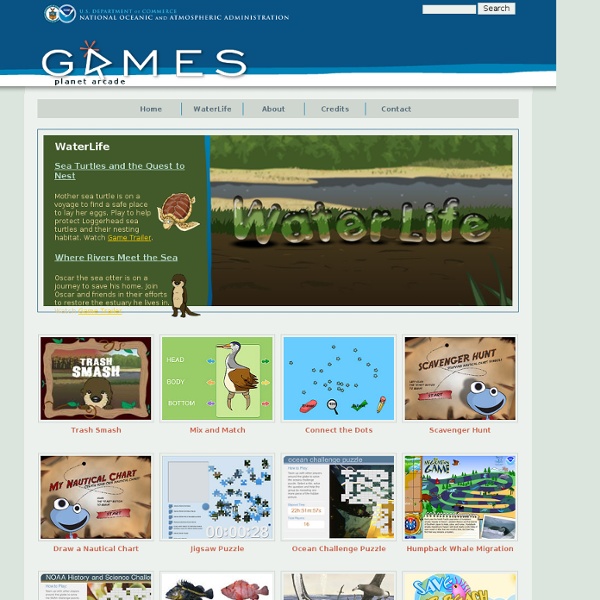



Wildlife & Nature Videos | Clips | Photos | Programmes - itvWILD Go with the Flow! Go with the Flow! Relax and go with the flow, Dude. "Go with the flow" means "Relax! Let the current of life's river carry you along." But, in life, that is not always the best way to get where you want to go. In this game, you "Go with the Flow" only after you have fixed the currents to take you where you want to go. Remember just two rules: Salt makes water heavier, so it sinks.Heat makes water lighter, so it rises. In your "current management" toolbox, you have If you have tasted the ocean, you know it is very salty. Oops, that's not quite right. If the ocean water is warmer than the lake water, the ocean water might not sink. See, it's not simple! And what goes on in the ocean is really complicated. The ocean is salty, but some parts are more salty than others. But the ocean is big. This animation shows an example of the area covered by Arctic sea ice in winter and in summer. For example, every summer, some of the sea ice in the Arctic Ocean (near the North Pole) melts.
Ask an Astronomer -- on Video Below you will find a list of questions that have video answers available. To view a segment, simply select your connection speed after the format you wish to view the answer in. (Windows Media is more common for PC users, and QuickTime is more common for Macintosh users. A video podcast version of these videos is available. iTunes users can subscribe directly. A video podcast version of these videos is available. iTunes users can subscribe directly. Brought to you by the Cool Cosmos Team (the joint Education and Public Outreach group for the Spitzer Space Telescope and the Infrared Processing and Analysis Center) located at the California Institute of Technology in Pasadena, California.
NASA eClips™ NASA eClips™ are short, relevant educational video segments. These videos inspire and engage students, helping them see real world connections. Full Site Located: Grades K‑5 The Our World program supplements existing elementary learning objectives not only in science, technology, engineering and mathematics, but also in reading, writing, and visual and performing arts. Grades 6‑8 Real World video segments connect classroom mathematics to 21st century careers and innovations and are designed for students to develop an appreciation for mathematics through real-world problem-solving. Grades 9‑12 Launchpad video segments support project-based and problem-based learning experiences in science, mathematics, and career and technical education classrooms. General Public The NASA 360 thirty-minute magazine style program highlights NASA's impact on daily lives, showcasing some of the 30,000 inventions developed by NASA over the past 50 years.
Home - Gymnasium for Brain Pages — Beyond Weather & The Water Cycle Discover the world's most endangered species Wildscreen's Arkive project was launched in 2003 and grew to become the world's biggest encyclopaedia of life on Earth. With the help of over 7,000 of the world’s best wildlife filmmakers and photographers, conservationists and scientists, Arkive.org featured multi-media fact-files for more than 16,000 endangered species. Freely accessible to everyone, over half a million people every month, from over 200 countries, used Arkive to learn and discover the wonders of the natural world. Since 2013 Wildscreen was unable to raise sufficient funds from trusts, foundations, corporates and individual donors to support the year-round costs of keeping Arkive online. Therefore, the charity had been using its reserves to keep the project online and was unable to fund any dedicated staff to maintain Arkive, let alone future-proof it, for over half a decade. Despite appeals for support, just 85 of our 5.6 million users in 2018 made a donation.
ElectroCity